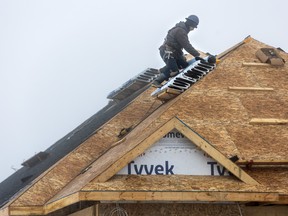Here are some things to be aware of so as not to get in the crosshairs of the Canada Revenue Agency when renovating your home

Article content
Q. If I tear down and then rebuild my principal residence of 32 years and sell it without moving in, will I have to pay any capital gains tax or Harmonized Sales Tax (HST)? Is there anything else I should be aware of so I don’t get in the crosshairs of the Canada Revenue Agency (CRA)? — Vera
Article content
Article content
FP Answers: To best understand how this transaction may be taxed, we need to review several considerations surrounding your proposal, Vera. The principal residence exemption (PRE) and its nuances are the first place to start.
Advertisement 2
Article content
- In Canada, to qualify for the principal residence exemption, a property needs to meet four tests:
- It needs to be a housing unit, leasehold interest in a housing unit, or capital stock of a co-operative corporation that allows you to inhabit the unit;
- You must own the property outright or jointly;
- You, your current or former spouse, or children lived in the property;
- You have designed the property as your principal residence.
Also, the size of the property must typically be on land that is no more than a half hectare in size, or some of the sale proceeds may be taxable.
If you live in and sell the property today, as is, you may be able to walk away without having to pay any tax, assuming you have not owned another property where you claimed the PRE during the time you have owned your home, Vera. The issue for the PRE, as it relates to your proposal, is that your renovation may or may not allow you to qualify fully for the PRE. There are also potential sales tax implications.
When completing a substantial renovation, a property may qualify as a newly built property if the interior of the home has been gutted and meets the 90 per cent test, meaning that at least 90 per cent of the interior has been removed as part of the process. You don’t necessarily need to remove parts of the structure, such as the foundation, exterior walls and floors, to qualify for this test.
Article content
Advertisement 3
Article content
The key is to focus on the livable areas of the home and whether those parts add up to 90 per cent. So, for instance, crawl spaces are not livable and may be excluded from the calculation.
If your “tear down” does surpass the 90 per cent test, then you may be considered a “builder” for CRA purposes and you may have to remit HST or goods and services tax (GST) on the fair market value or sale price of the home. Sales tax may apply whether you move in and keep the property or you sell the property.
Since you lived in the property for 32 years, you would not be liable for capital gains tax for those years when the home was considered your principal residence. But you may have some tax to pay if you end up renovating the home and then selling it for a profit. You would be considered to “dispose” of the home at its fair market value when you begin the renovation and immediately reacquire it. Renovation costs would increase your cost base accordingly.
If you then sell the property without moving in, Vera, the tax treatment may be considered that of an inventory sale. In this case, though you may wish the profit to be tax-free using the principal residence exemption, or taxable as a capital gain at a reduced tax rate, it will probably be considered as fully taxable business income.
Advertisement 4
Article content
Recommended from Editorial
-

Boost in home renos is helping drive up housing values
-

Taxpayer who flipped property eight years ago gets CRA call
-

Answers about the CRA’s principal residence exemption
If you move into the home and subsequently sell it, you may still need to include the proceeds of the sale as business income if it can be established that you built the property as a means to earn profit. CRA may review the intent behind your renovation and subsequent sale.
Vera, as with all complex tax situations, we recommend that you consult with a qualified tax professional to review your considerations to have full clarity on your tax exposure.
Andrew Dobson is a fee-only, advice-only certified financial planner (CFP) and chartered investment manager (CIM) at Objective Financial Partners Inc. in London, Ont. He does not sell any financial products whatsoever. He can be reached at adobson@objectivecfp.com.
Bookmark our website and support our journalism: Don’t miss the business news you need to know — add financialpost.com to your bookmarks and sign up for our newsletters here.
Article content






